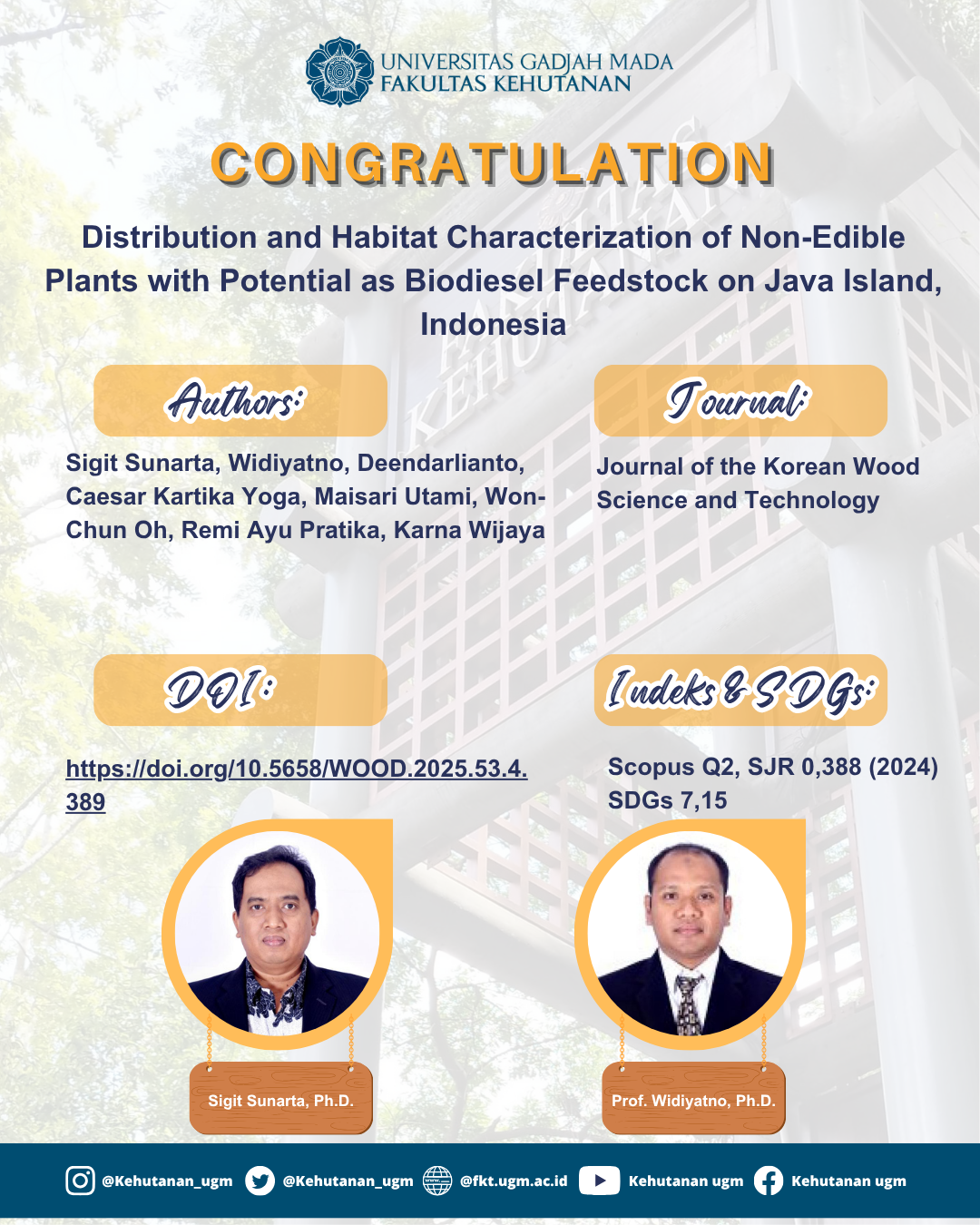
Abstract
Global warming, a critical component of climate change, refers to an increase in average temperatures across the atmosphere, oceans, and land. Global warming is primarily caused by the accumulation of greenhouse gases. As an archipelagic nation, Indonesia plays a critical role in mitigating climate change, as outlined in its Nationally Determined Contribution. The Indonesian government announced the B40 policy, requiring a 40% palm oil blend with 60% diesel, effective from 01 January 2025. Indonesia has abundant natural resources, including non-timber forest products from the forestry sector. Among these, oil-producing plants, such as kepuh (Sterculia foetida), nyamplung (Calophyllum inophyllum), malapari (Pongamia pinnata), and jatropha (Jatropha curcas) have potential applications in biodiesel. However, these non-edible plants are underutilized and seldom cultivated. This study examined the population distribution and characteristics of these plants to provide baseline data for future development and resource management. The spatial distribution and traits of these non-edible species were assessed, noting that jatropha, malapari, and nyamplung are predominantly found along coastal areas, whereas kepuh is distributed across Java. Clarification of biodiesel characteristics, including yield, viscosity, free fatty acid content, iodine number, and saponification number indicated that each type of oil has unique properties and potential as a bioenergy source.
SDGs:
SDG 7: Affordable and Clean Energy
SDG 15:Life on Land
Link Dokumen:
Download
